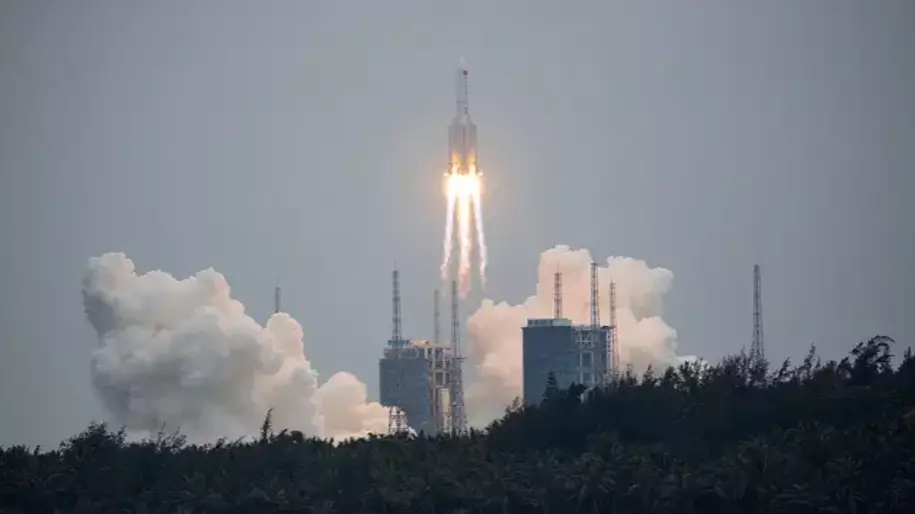
China's 'out of control' rocket has landed in the Indian Ocean, the Chinese space administration has said.
The Long March 5B rocket, which was launched on 29 April, re-entered the atmosphere at 3.24am UK time, with most of it destroyed.
Advert
The point of impact was somewhere southwest of Sri Lanka and India, although as yet there is no confirmation of exactly where.
The timing had been pinpointed quite precisely while the rocket was being tracked, but the landing area wasn't clear until the very last few minutes of its descent.
China has been criticised over how the situation was handled.
US Defence Secretary Lloyd Austin said: "There should be a requirement to operate in a safe and thoughtful mode and make sure that we take those kinds of things into consideration as we plan and conduct operations."
Advert
While astrophysicist Jonathan McDowell said that most countries have changed their spacecraft design, after a NASA project fell from orbit in 1979, landing in Australia.
The Harvard-based scientist told Reuters news agency: "It makes the Chinese rocket designers look lazy that they didn't address this."
The Global Times, a tabloid published by People's Daily, said that the reports of the rocket being 'out of control' were 'Western hype', adding that it is 'not worth panicking about'.
The rocket launched from the Wenchang Spacecraft Launch Site in south China's Hainan Province last month.
Advert
The chances of debris actually hitting anyone were small - with much of the craft expected to burn up in the atmosphere and any surviving wreckage more likely to land in the ocean or uninhabited areas of the planet.
The debris from the spacecraft in the sky was photographed for the first time.
Taken by Gianluca Masi, an Italian astrophysicist, it was photographed on 5 May and posted online on the Virtual Telescope Project.
Masi managed to capture a 0.5 second exposure of the falling rocket, that shows it as a bright light hovering in the sky.
Advert
Describing the image, Masi wrote: "At the imaging time, the rocket stage was at about 700 km [435 miles] from our telescope, while the sun was just a few degrees below the horizon, so the sky was incredibly bright.

"These conditions made the imaging quite extreme, but our robotic telescope succeeded in capturing this huge debris."
After it launched, the core module of the Chinese spacecraft successfully separated from the rocket and entered the predetermined orbit, but the 100ft booster started circling Earth, uncontrolled - rather than falling into a designated spot in the ocean, as is common for used rockets.
Featured Image Credit: PATopics: World News, China